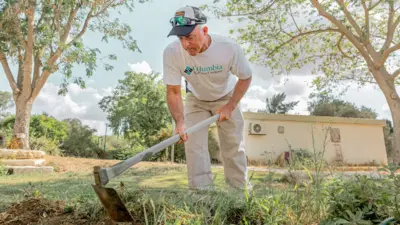We've updated our Privacy and Cookies Policy
We've made some important changes to our Privacy and Cookies Policy and we want you to know what this means for you and your data.
No easy way to get offshore power to East Anglia, says report
Image source, Tom Little/Reuters
- Author, Andrew Sinclair
- Role, BBC East political editor
A report has warned that "critical trade-offs will need to be made" to decide how best to carry power from East Anglia's offshore wind farms.
The Electricity System Operator (ESO) said no single option would provide value for money, be easy to deliver - or minimise the impact on communities.
Onshore cabling was the cheapest and quickest option, the ESO report said.
But the operator said a "hybrid" scheme, involving more cabling at sea, could also work.
Campaigners hope National Grid will change its plans to lay more than 100 miles of new cables from Norwich to Tilbury.
'Impact'
Suffolk County Council welcomed the ESO report which, it said, had found potential ways to reduce the need for pylons.
But it also acknowledged that doing away with pylons would have an additional impact on communities and landscapes in east Suffolk.
The report, into how best to upgrade the National Grid in East Anglia, scored 10 proposals for cost, deliverability and impact on communities.
Image source, Andrew Boyers/Reuters
It concluded that all the schemes would be challenging to deliver and would have a significant impact on people close to new infrastructure, such as substations.
Moving most cabling offshore to go around the coast of East Anglia, avoiding the Essex coastline altogether, was one of most expensive options, costing around £6bn.
Using Bradwell as a landing point and then cabling to Tilbury was put at a cost of £5bn.
'Substation'
Onshore cabling from Norwich to Tilbury, and from a new substation in Friston to another in the Tendring area and then onto Tilbury, was the cheapest option which could be delivered by 2030.
But the report found that, if the delivery date was put back to 2034, a hybrid option, which used a combination of offshore and onshore cabling - and which may not need as many substations, could be viable - although a bit more expensive.
However, a planned substation for Friston on the Suffolk coast featured in all the proposals.
National Grid said it would use the report to decide whether to amend its existing proposals.
Follow East of England news on Facebook, Instagram and X. Got a story? Email eastofenglandnews@bbc.co.uk or WhatsApp 0800 169 1830
Top Stories
More to explore
Most read
Content is not available








